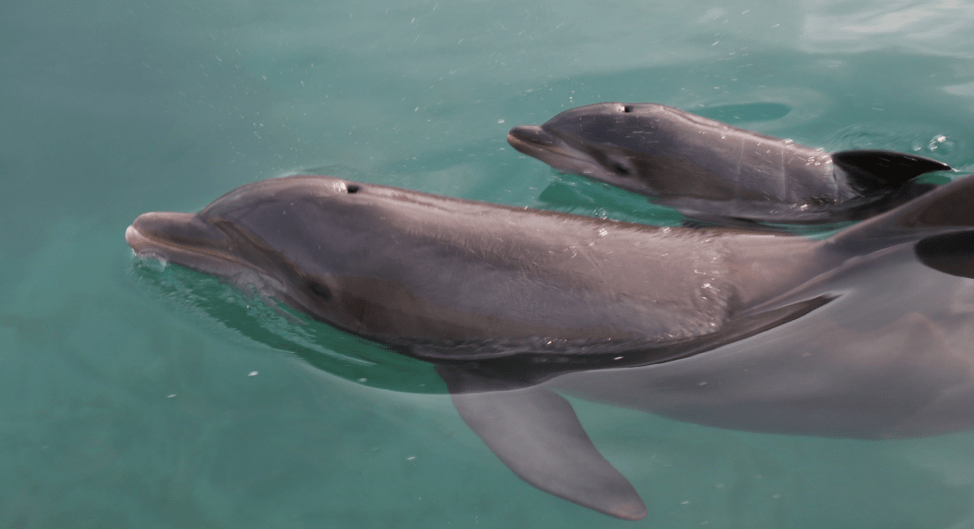IT’S A GIRL! – DOLPHIN QUEST BERMUDA WELCOMES BEAUTIFUL BABY DOLPHIN!

A baby dolphin was born in the early morning on Saturday, June 1 at Dolphin Quest Bermuda located at the National Museum of Bermuda.
After a 12-month gestation period, 30-year-old mother Bailey gave birth at approximately 5:45am ADT to a calf under the watchful eyes of our animal care team. Mother and calf are both doing well. The entire Dolphin Quest team was present for the birth which took approximately an hour.
“We are thrilled to welcome this exciting new addition to our family”, says Krysta Walker, Manager of Marine Animals for Dolphin Quest. “As with all of our dolphins, she will receive the absolute best care.”
The first 30 days of a newborn dolphin’s life are the most critical. While Bailey is a successful and experienced mother, Dolphin Quest marine mammal specialists will continue round-the-clock watch over the pair. Over that period, Bailey’s new baby will be introduced to the other dolphins at Dolphin Quest Bermuda.
Dolphin Quest was founded by two marine mammal veterinarians who ensure that the dolphin’s welfare always comes first. By providing excellent maternal nutrition, prenatal and neonatal care, Dolphin Quest Bermuda is recognized for its successful dolphin reproduction. Dolphin reproduction and calf-rearing is a natural and enriching social behavior for dolphins in the wild and in public display.
“Bailey has connected with thousands of school children, summer campers, and visitors to Bermuda over the years”, says Christine Mihelcic, Dolphin Quest General Manager. “Many of these guests tell us that their experience has encouraged their own conservation actions to protect marine mammals and their natural environment.”
Through voluntary participation in Dolphin Quest’s collaborative University level scientific studies, Bailey, together with other dolphins, veterinarians and trainers, is helping scientists better understand the increasing pressures on wild dolphin populations. Her participation has allowed Dolphin Quest to document and publish normal fetal growth charts as well as normal neonatal physiology and behavior. This baseline information is being used by field biologists for wild dolphin conservation efforts, and it is also shared with oceanariums, zoos and aquariums around the world.
These successful births help ensure that we have healthy populations for continued conservation studies like the one going on now at Dolphin Quest Bermuda. In May, visiting scientist Dr. Jason Bruck of the Oklahoma State University began a new study on the dolphin’s field of vision to help inform guidelines for boaters to prevent human-caused boat injuries to wild dolphins. It will also provide important insights into how biologists can potentially collect non-invasive hormone samples from wild dolphins using drone technology. The critical field of vision data voluntarily provided by the dolphins at Dolphin Quest, would be impossible to collect in the wild.
“Accredited zoos and marine parks like Dolphin Quest are fighting on the front lines for marine mammal conservation,” says Rae Stone, D.V.M, Dolphin Quest’s Co-Founder. “As animal lovers, we need to unite in support of science and crucial conservation initiatives right now today. Working together, we can create a brighter future for dolphins and whales in the wild.”
Dolphin Quest invites the public to join its efforts to better understand and improve the odds for wild dolphin babies by visiting Dolphin Quest, as visitor participation and donations support critical scientific studies. Visitors can see the new baby swimming with mom at Dolphin Quest Bermuda at the National Museum of Bermuda in the Royal Naval Dockyard.
